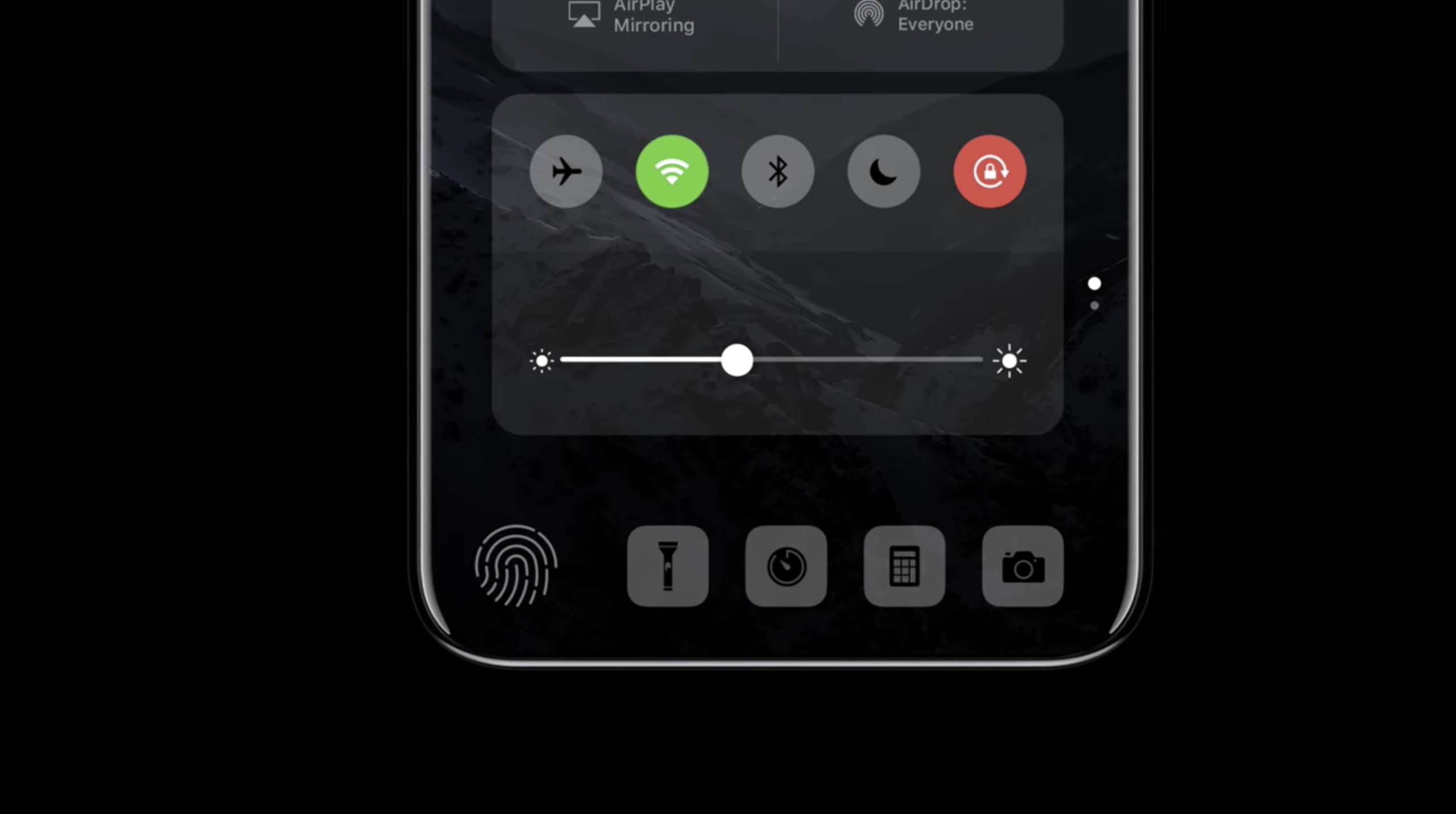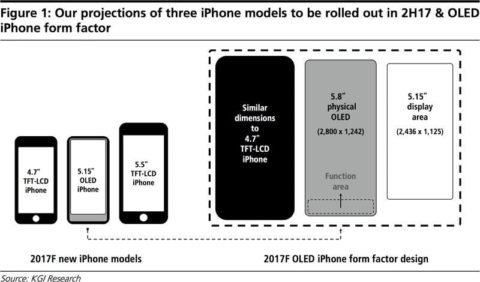Following rumors suggesting the next flagship iPhone will feature a reduction in bezels, many have wondered what that means for the TouchID Home button. Now, the notable KGI Securities analyst and Apple commentator Ming-Chi Kuo has predicted an iPhone 8 will contain a new ‘Function area.’
This will sit at the bottom of the screen and mean that the Touch ID won’t necessarily be built into the screen as first thought, but sit as a virtual button alongside others at the bottom of the screen. Think similar to the new MacBook Pro’s Touch Bar, meaning it could potentially change depending on the app being used.
Kuo’s predictions, which were picked up via MacRumors and described what rumor-hounds have become familiar with – that an OLED iPhone 8 will feature a 5.8-inch screen with essentially an edge to edge display. However, that doesn’t mean a bigger device overall; it will pretty much equal the size of a current 4.7-inch iPhone 7. The total display size will be bigger, however, covering around 5.15 inches, with the bottom of the screen reserved for the function area of virtual buttons.
We’ve come across a number of video concepts from graphic artists that have given a decent impression of what a kind of function area might look like, even before these predictions. Check out this one below.
But that still leaves us questioning what that means for the TouchID Home button. The above concept shows what a TouchID virtual button might look like, but that’s not to say there’ll definitely be one. The most recent prediction from Kuo says Apple will employ new biometric technology to verify the user.
Could that involve some kind of iris scanner or facial recognition technology? It wouldn’t be the first time Apple was rumored to be working both of these. See here, and here.
This rumor also effect iPad users as presumably iOS, which runs across both Apple’s smartphones and tablets will have to cater for the new functionality. These potential features are all easily transferrable and it could mean that future iPads will employ OLED technology, or gain a function area and facial recognition.


